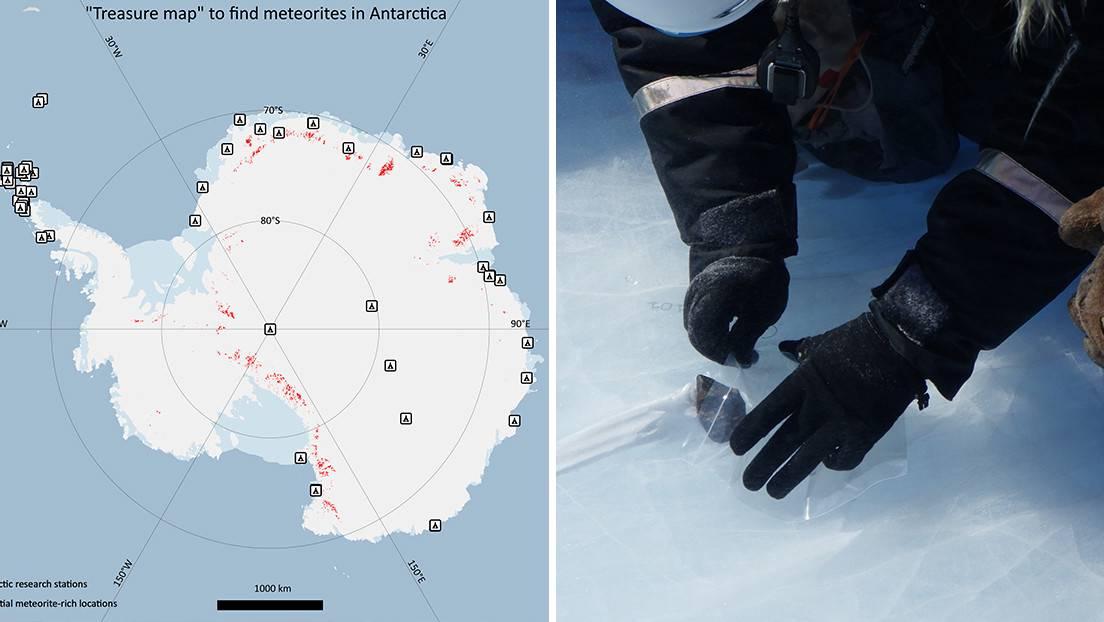They create a 'treasure map' that calculates that there are up to 300,000 meteorites without discovering in the ice fields of Antarctica
A Belgian-Holandic scientific team has developed an 'interactive treasure map that integrates an artificial intelligence algorithm with the purpose of helping the identification of areas with a high probability of presence of meteorites in Antarctica, he reported in a press releaseBrussels Free University (Belgium).
Veronica Tollenaar, a doctoral student at the Bruslense University and main author of the study, published on Wednesday in the journal Science Advances, commented that they managed to find "several areas rich in meteorites never before visited" located near the Antarctic Research Stations, where they useddrones to detect stone material.
"Although so far more than 45 have been collected.000 Meteorites in Antarctica, the potential for future missions to find meteorites is still largely exploited, "said Steven Goderis, co -author of the study, adding that, according to the calculations of the team, there could be about 300 another 300.000 Meteorites present on the surface of the ice layers.
How did they create the 'Treasury Map'?

"Through our analysis, we learned that the satellite observations of temperature, ice flow rate, surface area and geometry are good predictors of the location of the rich meteorit regions," said Tollenaar.The researchers combined the different types of satellite observations in an automatic learning algorithm, which detects interactions between these observations, an essential aspect to predict whether there is a presence of meteorites.
He also pointed out that "Antarctica is very remote and many areas have never been visited", adding that the reports of previous missions for the search for meteorites are not very clear or detailed, so there were no reliable signalings of where they can be found.
"To solve this problem, we trust positive and not signposted learning," said Tollenaar, indicating that the search algorithm is scheduled to include previously found meteorite observations (positive), as well as non -marked areas where there is no certainty of the presence of the presenceof meteoritos.
Researchers estimate that the accuracy of their algorithm to find rich meteorite regions is greater than 80 %.
If you liked it, share it with your friends!
